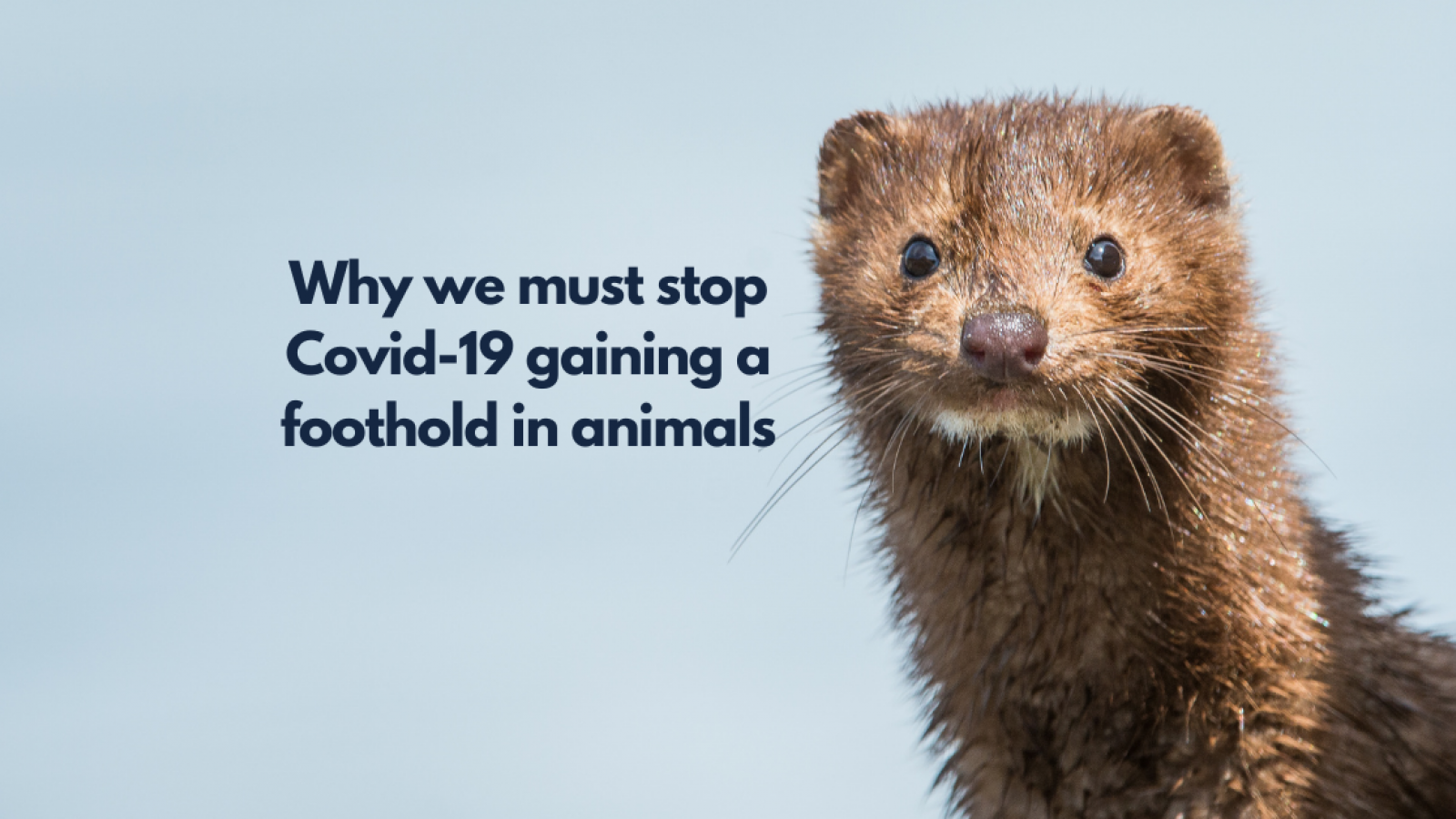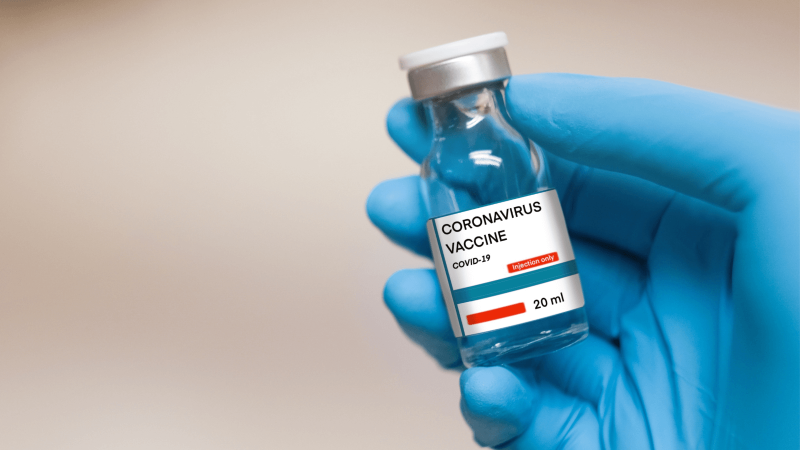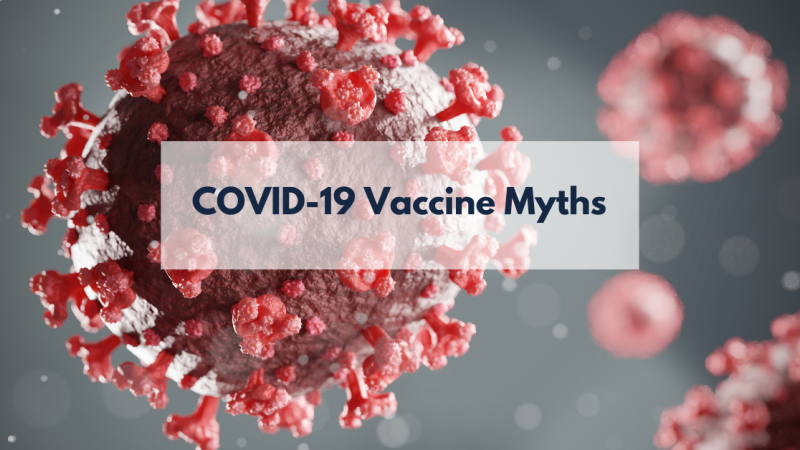“We need to develop surveillance strategies to ensure we don’t get taken by surprise by a large outbreak in animals, which could pose a threat not just to animal health but to human health as well”
As Covid-19 is spreading through human communities, health and governing bodies are wary of the virus expanding into animal populations as well. Drastic measures are being taken to prevent such events from happening, as exemplified by the massive cull of minks in Denmark. Scientists want to avoid animal reservoirs of the virus from forming at all cost. But why are they so dangerous?
60% of known infectious diseases in people can be spread from animals. The recent Covid-19 pandemic is only one example among others, that shows that it is important to control pathogens in animal populations.
“If SARS-CoV-2 becomes established in wildlife or other species that have close contact with livestock, then this increases the possibility for interspecies transmission,” Linda Saif, a distinguished professor of virology at the Ohio State University in Wooster, said in Nature.
“Once we have very limited human-to-human transmission … you could get again a jump from an animal reservoir to humans. Things would start all over again,”adds Arjan Stegeman, professor of Farm Animal Health and Epidemiology of Infectious Diseases at Utrecht University in The Netherlands.
But the issue isn’t so much that animals can become infected with human viruses, but that the viruses can then re-infect humans from the animal populations. Cats and dogs, that can be infected by SARS-CoV-2 but don’t transmit the virus back, don’t call for as much concerns as minks that can infect humans. As such, minks become a reservoir population for the virus in which it can proliferate, and mutate.
The replication of any pathogen in reservoir host populations is a breeding ground that can lead to the emergence of new mutations, new forms of the virus, which can then be transmitted back to humans. This is especially true since these non-human hosts often appear to tolerate zoonotic infections with little or less evidence of disease. Take the 2009 flu virus strain. It could spread from pigs to people and from people back to pigs. But what made things worse was that the influenza virus mutated as it circulated in the animals. Specifically, the virus combined with other flu viruses to create novel virus variants, which later jumped back to humans.
The same kind of event happened recently in Denmark with a variant of SARS-CoV-2 that mutated in minks and then transmitted back into humans. Seven different mutations of the SARS-CoV-2’s spike protein have so far been identified in minks, four of which relate to a single SARS-CoV-2 variant. And these mutations are different from those generated by human-to-human transmission/replication.
But not all mutations in the virus are cause for concern. Viral mutations are a normal phenomenon and it doesn’t mean that the virus will necessarily behave any differently or be more dangerous. But it can mean that it can be recognised more difficultly by the human immune system. For François Balloux, professor at University College London and specialist in the evolution of pathogens, the virus mutation found in minks does not increase the transmissibility or the lethality of the virus in humans.
"When SARS-CoV-2 is transmitted in minks, we observe several mutations that emerge recurrently, but that are found only very rarely found in viruses isolated from humans. These mutations represent adaptations of the virus to transmission in mink, and do not make the mutated strains more transmissible or pathogenic to humans".
What alarmed the authorities and prompted them to take such drastic measures is that one of the mutations identified in minks is characterised by a lower effectiveness of human antibodies. This is means that future vaccines could be less effective against this strain.
“If we have many different viral strains with lots of different mutations, after a while we will have to produce a more complex vaccine with several viral strains to make sure it works properly,” explained Gilles Salvat, research and referral Deputy CEO at the ANSES in France.
At present, there is no evidence that animals, including mink, play a significant role in spreading the new coronavirus to humans, officials say. But “slaughtering mink, although it cannot by itself make the strain disappear, may prevent other mutant strains from developing in mink,” explains Prof James Wood, Head of Department of Veterinary Medicine, University of Cambridge. It wouldn’t be the first time that such measures are taken to prevent disease in livestock.
In the absence of effective vaccines, or treatments, the slaughter of animals to limit the spread of epidemics is actually quite common practice. Hundreds of thousands of cow were put down in efforts to slow the progression of Mad Cow disease in the UK a few decades ago. More recently millions of pigs were killed in Asia to prevent the spread of African swine fever. Minks are only the latest victims of the lack of means to fight pathogens and will unlikely be the last.
3 out of every 4 new or emerging infectious diseases in people come from animals and this proportion could increase along with interactions between humans, domestic animals, livestock, and wildlife.
The advent of zoonotic diseases in humans, notes Björn Olsen, an infectious diseases specialist from Uppsala University and Kalmar University in Sweden, results from humans undertaking agriculture.
“When we started to live in warm spots and domesticated animals, we started to have the transfer of pathogens from domesticated animals.”
Before that, humans probably were infested with parasites, but populations were likely too sparse for epidemics to take hold.
Now we have reached a point where biodiversity is on the decline and humans are the second most common mammalian species on Earth, after the rat, and the most common bird is the chicken. Bringing the “monoculture” of humans together with domesticated livestock and wildlife, explains Olsen allows “different microorganisms to make the journey from one organism to another.”
And it's not just how we live with domesticated livestock that creates opportunities for zoonotic agents to change host, it's also how we live in our environment. The 1918 influenza pandemic occurred when there was a large international movement of troops during the First World War. The flu was probably jumping between birds, humans and pigs frequently before that time, but with the massive armies in Europe, the time, place, and circumstances were ripe for what became a pandemic.
Our current world is experiencing even greater numbers of people and animal movement than then, and that flux moves diseases around too. International travel was one of the reasons why outbreaks such as HIV may have gone global so quickly. Previous to globalised travel, HIV-1 had jumped into the human population from chimpanzees several times but not spread as far.
Our new way of life is causing infectious diseases to emerge more frequently, spread greater distances, pass more easily between humans and animals, and change rapidly into new and more virulent strains, as ever before.Nowadays, every zoonosis is a present or potential threat to human health, exemplified by the most recent coronavirus outbreak.
“The establishment of a pandemic virus in animal populations can be critical and should be always taken into consideration,” explains Martin Beer, a virologist at the Federal Research Institute for Animal Health in Riems, Germany.
“We need to develop surveillance strategies to ensure we don’t get taken by surprise by a large outbreak in animals, which could pose a threat not just to animal health but to human health as well,” heightened Joanne Santini, a Professor of Microbiology at University College London.
Last edited: 3 March 2022 11:24




